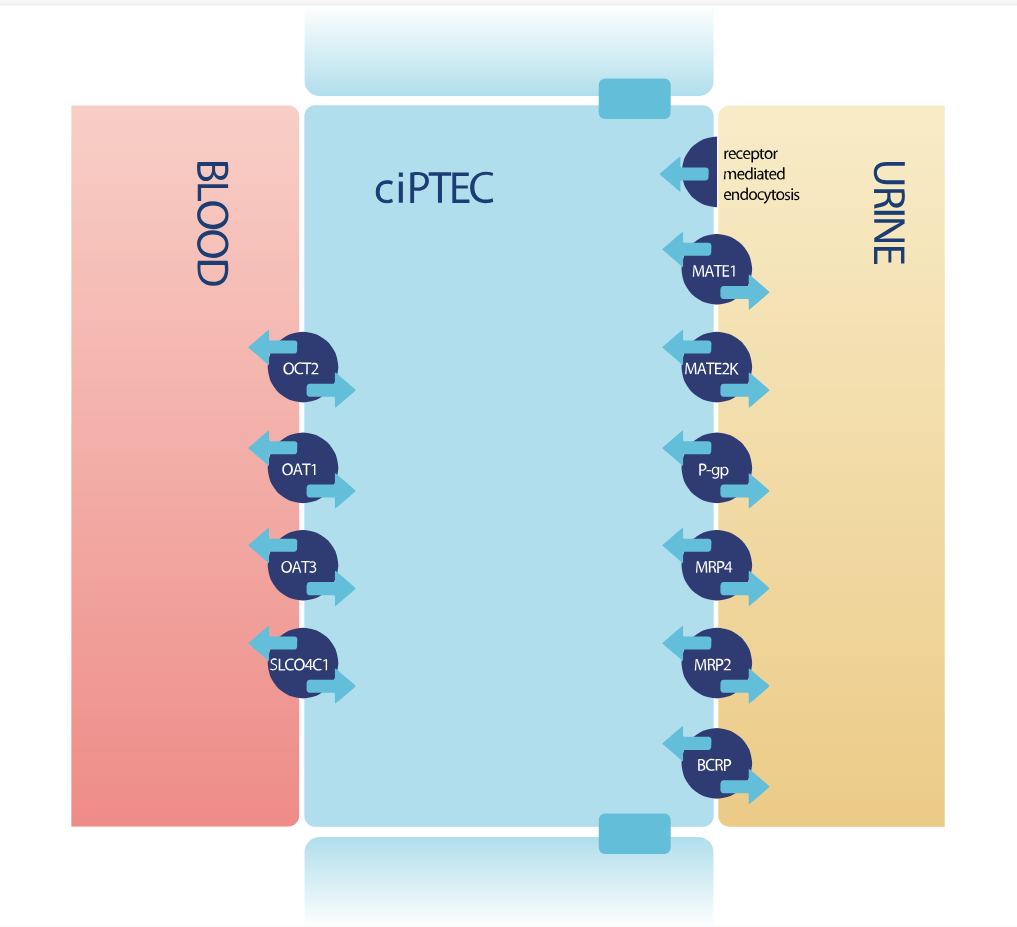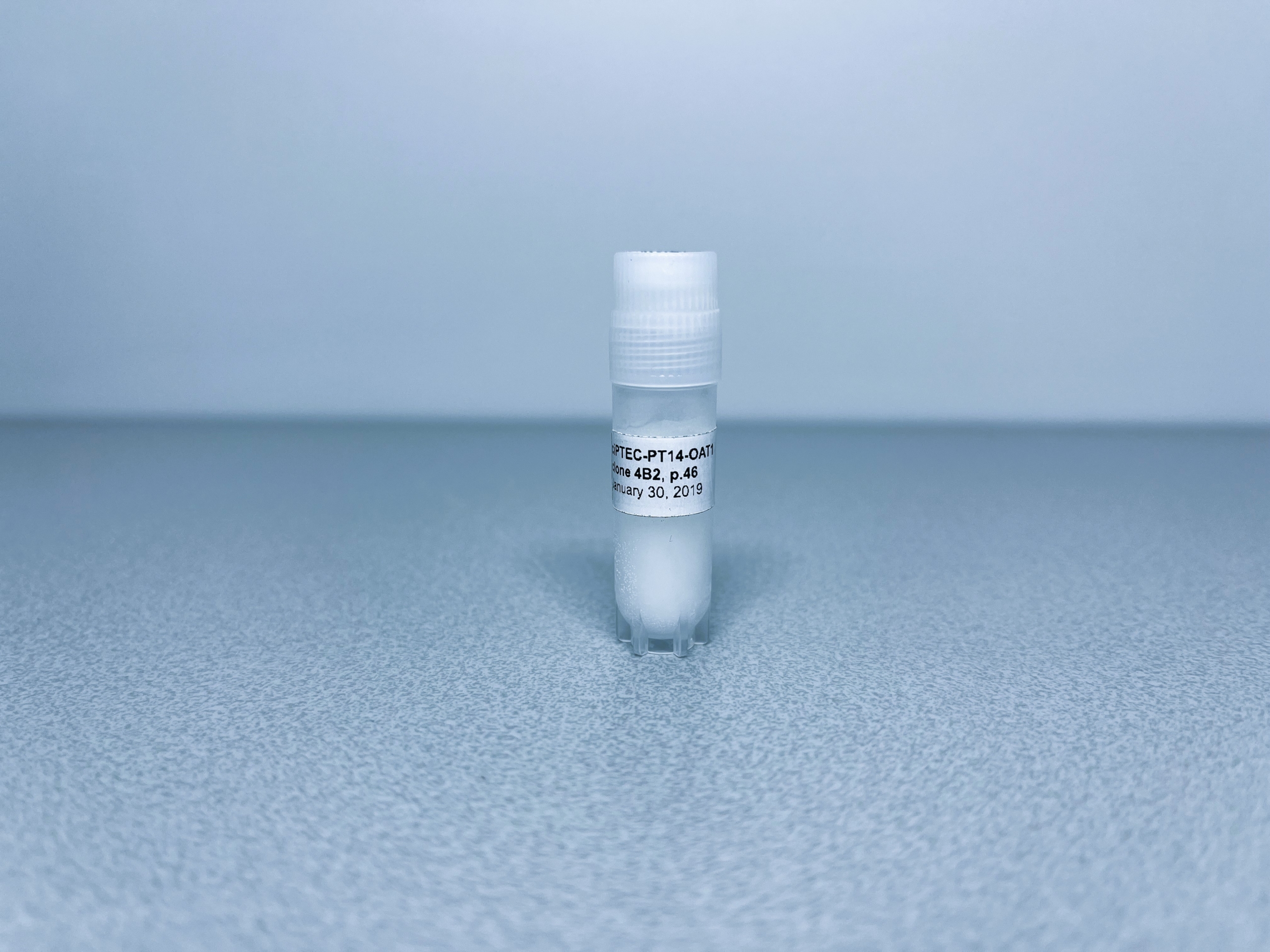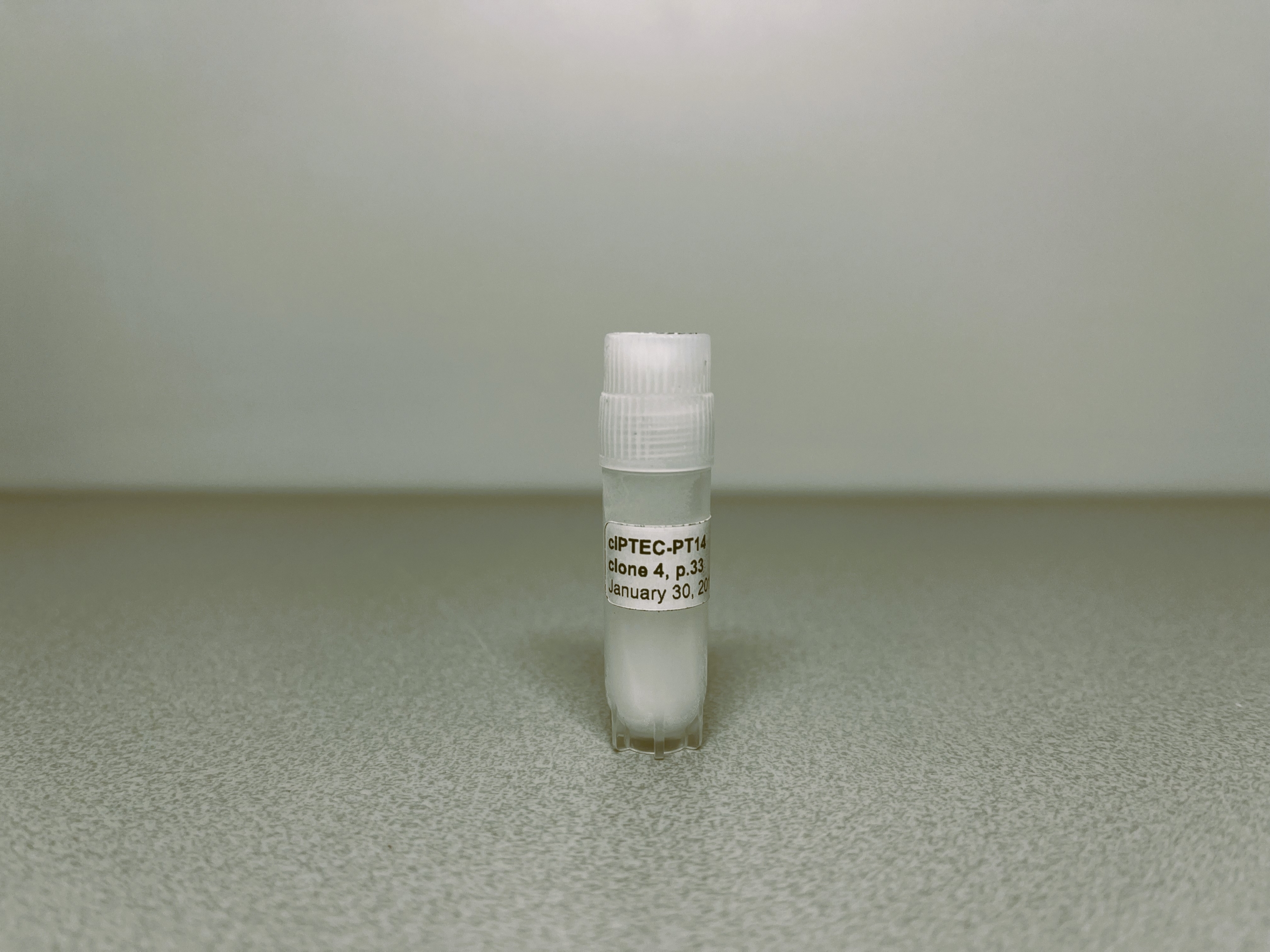Renal proximal tubular epithelial cells (PTECs) are responsible for the reabsorption of filtered solutes by the glomerulus and the excretion of waste products and xenobiotics and their metabolites. PTECs are prone to drug-induced toxicity because they express various transmembrane drug transporters, which facilitate the basolateral influx (organic anion transporter 1 and 3(OAT-1) and organic cation transporter 2 (OCT2)) and the apical efflux (P-glycoprotein transporter (P-gp), multidrug resistance protein 4 (MRP4), breast cancer resistance protein (BCRP), and multidrug and toxin compound extrusion-1 (MATE1)) of a potentially toxic compound.
ciPTEC (conditionally immortalised human proximal tubule epitelial cell) is a human renal cell line that mimics the proximal tubule cells of the kidney, expressing key proximal tubular markers.
ciPTECs have been stably transfected by SV40T and hTERT, subcloned and well characterized.
Expressing proximal tubular markers alkaline phosphatase, di-peptidiyl peptidase IV and ZO-1. Maintained transport functionality for sodium-dependent phosphate reabsorption, megalin-cubilin receptor-mediated endocytosis, organic cation transport (SLC22A2); p- glycoprotein (ABCB1), multidrug resistance protein 2/4 (MRP2/4), breast cancer resistance protein (ABCG2) and a range of metabolic enzymes.
-
ciPTEC, ciPTEC Licenses
Bundle of ciPTEC (parental, OAT1 and OAT3) in 1 License
Please log in to view prices and purchase products.
-
ciPTEC Assay Ready Cells
ciPTEC-OAT3 Assay Ready Cells
Please log in to view prices and purchase products.
-
ciPTEC Assay Ready Cells
ciPTEC-OAT1 Assay Ready Cells
Please log in to view prices and purchase products.
-
ciPTEC Assay Ready Cells
ciPTEC-parental Assay Ready Cells
Please log in to view prices and purchase products.
-
-
-







